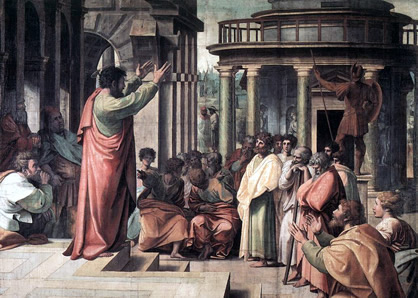Coos (Kos) Acts 21:1
Coos (also Cos, Kos) is long and narrow, the second largest
island of the Dodecanese, behind Rhodes. The island is not far from
the shore of Asia Minor, near Hallicarnassos, and is
 most
noted as the ancient home of Hippocrates the physician. The island
has a long and colorful history.
most
noted as the ancient home of Hippocrates the physician. The island
has a long and colorful history.
Some time in the Greek Dark Ages (1150-800 BCE) the Achaeans
arrived, after the decline of Minoan Crete. By the 11th century BCE
the Dorians invaded Kos and expelled the Achaeans. In the Archaic
Period (800-500 BCE) the islands of Kos, Nisyros, Karpathos, and
Kalymnos played an important part in the Trojan War according to The
Odyssey. After the fall of Troy, local Greek mythology presents: "Podarios,
son of the god Asklepios, the Doctor from Thessaly, settled on the
island after a shipwreck. From this time, the family of the
Asklepidai lived on the island (Hippocrates was introduced as the
 18th
descendant).
18th
descendant).
In the 7th century BCE, Kos joined a federation with six other
cities in Asia Minor, Rhodes, Kalymnos and Nisyros. Later during the
Classical Period (500-336 BCE), the island of Kos was subdued by the
Persians, as were the other cities of Asia Minor. In 479 BCE the
island was represented at the battle of Salamina (where Xerxes was
defeated). During the Peloponnesian war (431-404 B.C.E.) Kos allied
with Athens . For this the island paid a high tribute when the
Spartan Commander Astochos invaded the island in 411 BCE. In 394,
after a brief treaty with Sparta, the Koans once again allied with
Athens.
Under the influence of Athens democracy was introduced. Life on Kos
was stable and the island enjoyed prosperity until the invasion of
King Mausolos of Halikarnasos in 358. The island recovered under
Alexander and the Diadoche. In 334 BCE the island allied with
Macedonian and
 Alexander
the Great. The ports became places of supply for the advancing Greek
armies.
Alexander
the Great. The ports became places of supply for the advancing Greek
armies.
During the Roman Period Kos became a part of the Eastern colony of
the Roman Empire and was granted special privileges (from 82 BCE).
Some of these were stripped away during the reign of Augustus and
cause a decline that was compounded by a terrible earthquake in 27
BCE. The island recovered again, in part due to its important
reputation as a healing center. In the Book of Acts, the island was
an overnight stop during part of St. Paul's journey to Jerusalem.
St. Paul came from Miletos , and sailed to Coos, Rhodes and Patara
(Acts 21:1).
By the Byzantine Period (300-1000 CE) Kos flourished as part of the
Byzantine Empire. Close to Asia Minor, the island was continuously
attacked by both pirates and Turks. By the Crusader Period, (1204
CE) the island was occupied by the Venetians. The Ottoman Rule
(1450-1830)
 began
in 1457 CE, when a powerful Turkish army looted the island. Turks
again subdued the island under Sultan Sulieman, but the Koans
continued with a resistance movement.
began
in 1457 CE, when a powerful Turkish army looted the island. Turks
again subdued the island under Sultan Sulieman, but the Koans
continued with a resistance movement.
On May 5th, 1912 Italian troops invaded the island and expelled the
Turks. In 1934 an earthquake destroyed 80% of the housing and
monumental architecture of the island, but most was later restored.
Occupation continued under the Germans in 1943. The 18 months of
German occupation brought inhumane suffering to the Koans. In 1945
the island came under British control and was rebuilt. Finally, on
March 7th, 1948 it became part of modern Greece.
PLACE
REFERENCE
Amphipolis
Acts 17:1
Apollonia
Acts 17:1
Athens
Acts 17:15-16, 22; 18:1; 1 Thessalonians 3:1
Berea
Acts 17:10, 13: 20:4
Cenchrea
Acts 18:18, Romans 16:1
Coos (Kos)
Acts 21:1
Corinth
Acts 18:1; 19:1; 1 Corinthians 1:2; 2 Corinthians 1:1, 23; 2 Timothy
4:20
Cyprus
Acts 4:38; 11:19,20; 13:4; 15:39; 21:3,16; 27:4
Neapolis (Kavala) Acts 16:11
Patmos
Rev 1:9
Philippi Matthew 16:13; Mark 8:27; Acts 16:12, 22;
20:6; Philippians 1-4; 1 Thessalonians 2:2
Rhodes
Act 21:1
Thessalonica Acts
17:1. 11. 13; 27:2; Philippians 4:16: 1 and 2 Thessalonians; 2
Timothy 4:10


